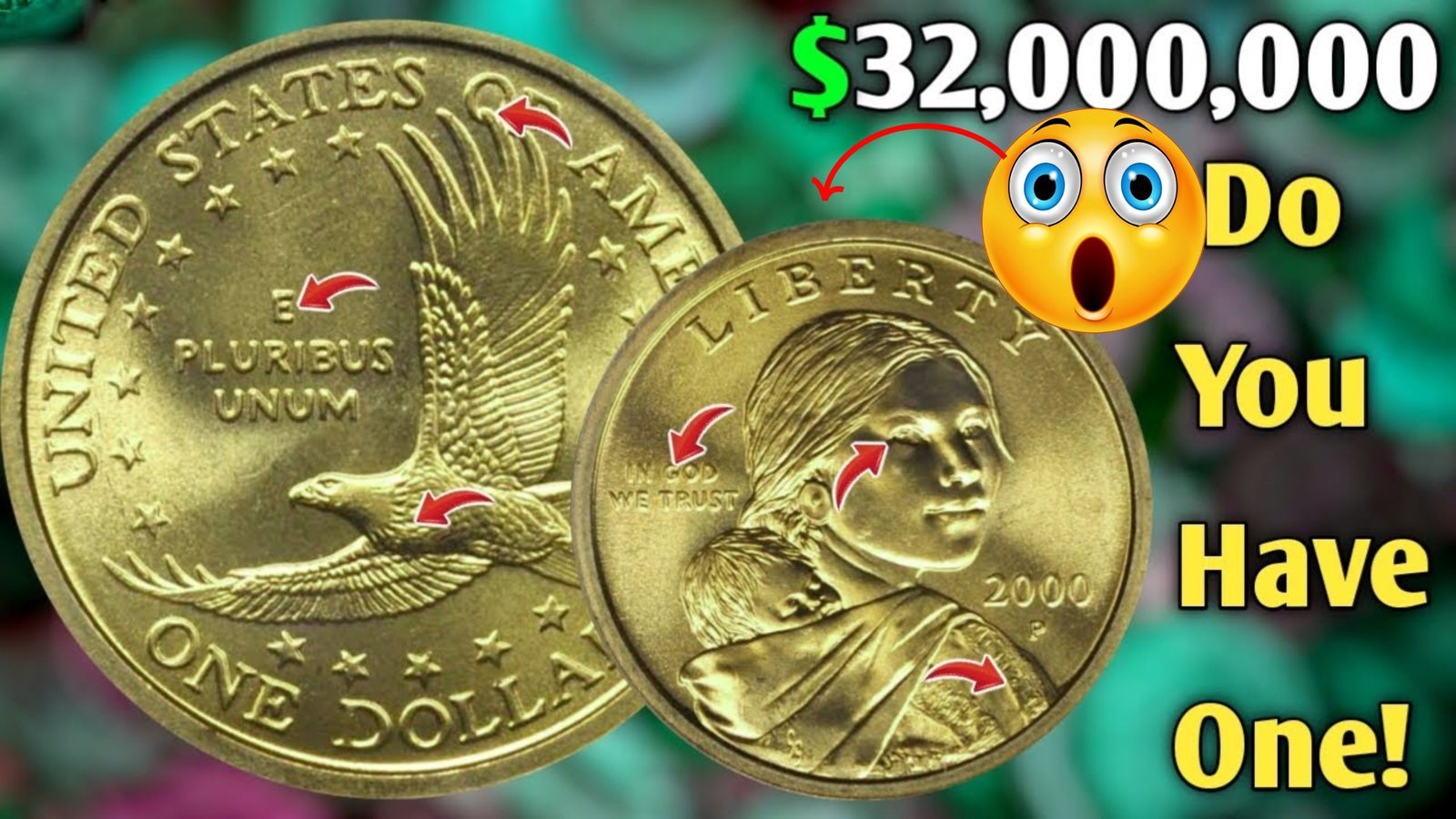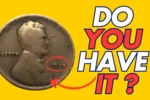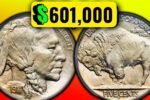The Rare Sacagawea Dollar : When the U.S. Mint introduced the Sacagawea dollar coin in 2000, it was meant to modernize coin usage and commemorate a vital figure in American history — Sacagawea, the Native American guide of the Lewis and Clark expedition. Although most of these coins are worth only face value, a few incredibly rare variations have made headlines. One, in particular, stunned the numismatic world by selling for $2.1 million — not for its age, but for a minting mistake that turned it into a one-of-a-kind collectible.
What Makes This Coin Worth $2.1 Million?
This rare version of the Sacagawea dollar is known as a mule error — a coin mistakenly struck using dies from two different coin types. In this case, the obverse features Sacagawea as it should, but the reverse carries the design of a 1999 Washington quarter instead of the expected soaring eagle. This fusion of two different coin types was never meant to happen, making the error incredibly rare and valuable. Only a handful of these mule errors are known to exist, and collectors are willing to pay staggering amounts for them.
How the Mule Error Happened: A Rare Minting Mistake
In the world of coin production, dies are like stamps that strike designs onto blank metal discs called planchets. For this error to occur, a Sacagawea dollar obverse die was accidentally paired with a Washington quarter reverse die during a test run or experimental strike. These coins were not intended for release — yet somehow, a small number were released into circulation. Their rarity, combined with the clear mismatch in design, makes them uniquely desirable.
What to Look For: Identifying the Mule Error
If you have a Sacagawea dollar, the most important place to look is the reverse. The correct version will show a flying eagle with stars in a circular pattern. However, if you see the eagle from the back of a 1999 quarter — standing tall with spread wings and holding arrows and an olive branch — you may be holding a million-dollar coin. This striking design mismatch is immediately noticeable once you know what to look for.
Why These Coins Are So Valuable
Coins become highly valuable for one of three reasons: rarity, historical significance, or error. The mule Sacagawea dollar has all three. It’s rare (fewer than 20 known), tied to a unique error in U.S. minting history, and no others are being made. The coin’s uniqueness has driven its value into the millions, as collectors will pay handsomely for the chance to own something no one else has.
Could One Still Be in Circulation?
Yes, it’s possible — though extremely rare. Since the first of these coins was found in a routine bank shipment, experts believe others may have slipped into circulation unnoticed. That’s why many coin enthusiasts continue checking every Sacagawea dollar they come across. The idea that such an expensive error could still be out there keeps collectors and treasure hunters hopeful.
Frequently Asked Questions ( How to Spot The Rare Sacagawea Dollar Valued at $2.1 Million )
Q: What does a normal Sacagawea dollar look like?
A: The regular version features Sacagawea on the front and a flying eagle surrounded by 17 stars on the reverse.
Q: What makes the mule error coin so valuable?
A: It’s an extremely rare minting error where two different coin designs — a Sacagawea dollar front and a Washington quarter back — were struck together. These kinds of errors are virtually never seen in circulation.
Q: How do I test if my coin is a mule error?
A: Examine the back. If the reverse looks like a 1999 quarter instead of the Sacagawea eagle, you may have a mule. Compare with a known dollar and quarter or consult a professional.
Q: Can I find one of these coins in circulation today?
A: It’s highly unlikely, but not impossible. At least one was found in a standard coin roll, so there’s always a slim chance another is still out there.
Q: Where should I take my coin for evaluation?
A: Use professional grading services such as PCGS (Professional Coin Grading Service) or NGC (Numismatic Guaranty Company) for authentication and appraisal.
Q: Should I clean the coin before getting it graded?
A: No — never clean a coin, especially one that might be rare. Cleaning can destroy its collector value. Handle it gently and store it in a protective case.




